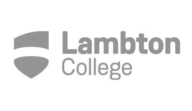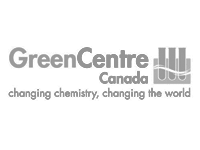RESULTS AND IMPACT
Projects
See the results of edeX and gdeX in solving real-life problems.
Get in touch with us to start working on a new project.
See the results of edeX and gdeX in solving real-life problems.
Get in touch with us to start working on a new project.
Xiera has worked with various institutions including Lambton College, Mohawk College and NITK to test our technology. Below, you can see the reports of the colleges we’ve worked with to see how edeX performed. In addition to the reports, we’ve provided both a technical and a non-technical summary of the reports.
The results show that edeX consistently outperforms a PID controller on nearly every metric. This means that edeX can improve your products by providing energy and/or time savings. To learn more about fuzzy logic in general, see our Fuzzy Logic white paper page.








Experiments were done for two temperature setpoints using an ON-OFF power switch and a linear power switch.
For the ON-OFF power switch, edeX fuzzy controller outperformed the PID controller, and provided significant energy savings of 31% and 25% for the two setpoints of the test. For the linear power switch, edeX fuzzy controller also provides energy saving of 6% and 15% for the two setpoints in comparison with the PID.
Experiments were done for two temperature setpoints, 55 deg C. and 75 deg. C. The edeX fuzzy controller outperformed the PID controller, and provided significant energy savings of 31% and 25% for the two setpoints of the test, when the power switch was ON-OFF.
When a linear power switch was used the PID performed better than it did in when the ON-OFF switch was used. However, for the same two setpoints, edeX fuzzy controller was still better than the PID, providing energy saving of 6% and 15% for the two setpoints respectively.
After 20 minutes of charging, the battery voltage increased by 2.5% more using edeX versus a regular charger. This means that with edeX the battery charged more in the same amount of time.
Furthermore, edeX was able to charge the battery to 100% of the rated voltage in 60 minutes, while a regular charger took 104 minutes. This means edeX was 73% faster.
edeX accumulated more charge in the battery in comparison with the regular charger. This was observed from the discharging pattern. Furthermore, using edeX the battery took 23 minutes longer for the charging current to drop by 15% versus a regular charger. What this means is that the battery lasted longer using edeX.
The regular chargers could only charge the batteries up to 80-85% of its full capacity. edeX provides 100% capacity.
Under edeX, the maximum charging current was limited to 1.6A to ensure a safe charging level while the regular charger started at 2.2A, which causes more damage to the battery cells. What this means is that edeX is safer.
edeX provides flexibility in controlling the initial charging current and therefore was used safely to charge different stacks of cells assembly.
Furthermore, the edeX’s data logging function allows it to provide more options for safety as it can monitor both over and under voltage levels of the battery and prevent battery form damages.
The battery voltage increased by more than 10% after 20 minutes with the regular charger. While under the edeX control the voltage increased by 12.5%.
Using Li-Charger, the battery voltage reached 98% of the rated voltage (11.8 V) in 67 minutes, while under edeX it took only 56 minutes, i.e. 10 minutes less, which is 15% faster than the regular charger. This means around 15% energy savings.
Furthermore, experiments showed that it took the battery voltage 104 minutes to reach 100% of the rated voltage level when the battery charged under the Li-Chg charger. Meanwhile, it took only 60 minutes under the edeX charging controller.
Under edeX, the maximum charging current was limited to 1.6A for almost 60 minutes to ensure a safe charging level. Meanwhile with the Li-Charger it was not possible to have control of the initial charging current that started at 2.2A and remained at 2.2A around 12min. Hence, edeX provides flexibility in controlling the initial charging current and therefore can be used safely to charge different stacks of cells assembly.
During the discharging cycle, the battery voltage dropped by 14.6% from its no load level meanwhile, it dropped by 10.4% from the no load level with edeX. This indicated that edeX accumulated more charge in the battery in comparison with the regular charger. When the load was applied to the battery the battery voltage dropped due to the load. This was observed from the discharging pattern.
Also, it took 52 minutes for the charging current to drop by 15% under the regular controller. Meanwhile, it took 75 minutes with the edeX controller. This allowed an increase in accumulated battery capacity and provided more operational time for the connected load. The battery accumulated more charge to supply under edeX and the load was supplied longer than when the battery was charged with Li-Chg charger.
edeX provided a fast and safe charging profile to meet different stacks of Li-ion cells without compromising the battery life and safety.
The regular chargers could only charge the batteries up to 80-85% of its full capacity and the operator had no control on the initial charging current. edeX provided 100% capacity under a controlled charging current once tuned to the battery pack.
Furthermore, the edeX’s data logging function provided more options for safety as it can monitor both over and under voltage levels of the battery and prevent battery form damages.
1. Setpoint Control
The PID controller results showed that it has a 56% overshoot value, versus edeX which had an overshoot value of 0%. In addition, the PID control system had a settling time of ≈ 1.6 seconds after going through an oscillation phase, whereas edeX was 146% faster.
edeX therefore had a smoother response.
2. Torque Disturbance
A torque disturbance was applied after the motor had reached a steady-state (constant) speed. When the torque was applied, edeX controlled motors dropped 11% less below the setpoint than PID controlled motors. edeX was able to recover the motor speed ≈ 0.3 sec faster than the PID. When the applied torque was removed, edeX increased the motor speeds by ≈ 42% over the setpoint and then reached a steady state in ≈ 0.7 sec, whereas the PID motors increased speed by 56% over the setpoint and took ≈ 1.5 sec to reach a steady state. This means edeX recovers 114% faster, or in less than half the time compared to the PID.
Using edeX the motors had a faster recovery time both when the torque was applied and removed, and edeX had a lower overshoot than the PID. This means that motors are more stable using edeX.
1. Setpoint Control
The PID controller results showed that the rise time for the motor speed signal is ≈ 0.125 sec with a 56% overshoot value. In addition, the PID control system had a settling time of ≈ 1.6 seconds after going through an oscillation phase.
edeX- FLC results showed that the rise time for the motor speed signal is ≈ 0.6 sec, a settling time of ≈ 0.65 sec, a 0% overshoot. Given, the selected performance criteria, PID had a faster (37% faster) risetime when compared to the FLC system; however, the FLC outperformed the PID controller from the overshoot perspective since there was zero overshoot; and from a settling time perspective the FLC system was 146% faster than the PID controller system.
It can be seen that, although the PID controller presented a faster rise time, it also presented oscillations and a longer settling time than the smoother response of the FLC controller.
2. Torque Disturbance
Using the PID controller, the torque disturbance was applied after the motor had reached a steady-state (constant) speed. When the torque was applied, the PID output increased to compensate for the speed loss in the motor, which initially caused the motor speed to drop by 39% of the step set-point. The PID controller was able to recover the motor speed in ≈ 1.1 sec and then continue with slight oscillations, likely due to the small torque variations. When the applied torque was removed, the motor speed increases by 56% of the set-point, followed by oscillations and reaching steady state after ≈ 1.5 sec.
Using edeX-FLC, the torque disturbance was also applied after the motor had reached a steady-state (constant) speed. The edeX-FLC output increased to compensate for the lost motor speed, which dropped by 27% below the set-point. The edeX-FLC controller recovered the motor speed in ≈ 0.82 sec after the torque was applied. When the applied torque was removed, the motor speed increased by ≈ 42% of the setpoint and then reached a steady state in ≈ 0.7 sec after the torque was removed, without any oscillations.
It can be seen that edeX-FLC presented a faster recovery time when the torque was applied and removed, as well as having a lower overshoot than the PID controller.
1. A System with 2 Inputs and 2 Outputs
For this system, edeX presented a significant improvement in settling time and noise attenuation versus the PID. The settling time for edeX fuzzy logic controller (FLC) was 35% to 44% faster and the noise impact in the controller output signal was 60% to 90% smaller.
2. System with 3 Inputs and 3 Outputs
For the 3×3 system, the settling time and response to disturbance from edeX FLC was significantly better than the PID. For edeX FLC the settling time for the controllers was 48% to 90% faster than the PID. edeX FLC was able to handle disturbance issues without affecting the process.
This also means that as the complexity of the process increases, edeX FLC outperforms the PID by a greater margin.
1. System with 2 Inputs and 2 Outputs
For this system, when comparing the PID and edeX-FLC system, the edeX-FLC system presented a significant improvement in settling time and noise attenuation. The settling time for the edeX-FLC was 35% to 44% faster and the noise impact in the controller output signal was 60% to 90% smaller.
2. System with 3 Inputs and 3 Outputs
For the 3×3 system, the settling time and response to disturbance from the edeX-FLC system was significantly better than the PID system. The settling time for the controllers was 48% to 90% faster than the PID system and the edeX-FLC controllers were able to handle disturbance issues without affecting the process.
The inputs:
u1 = reflux flow rate, gpm (m3/s)
u2 = side stream product flow rate, gpm (m3/s)
u3 = reboiler stream pressure, psig (kPa)
The outputs:
y1 = overhead ethanol mole fraction
y2 = side stream ethanol mole fraction
y3 = tray #19 temperature, “C (corresponding to bottoms
composition)
edeX software can handle complicated designs including multi-input multi-output and multivariable interactive control systems. Below is a simulation of a for a pulverizer in a coal fired power generation station (a 2×2 system).
The pulverizer has large process dead times and it is considered a difficult loop to control due to the initial cooling of the burning chamber when demand is increased, or when there is a process disturbance.
The autotuner embedded in edeX makes it possible to design multivariable fuzzy controllers capable of eliminating the high interaction between the two loops, and to overcome the problem of large delays in the plant response.
To show the power and robustness of the fuzzy controller, we applied very large disturbances – equal to the set points. We applied these disturbances at the process output.
As can be see above, the fuzzy controller was able handle the disturbances remarkably well. Furthermore, it was able to reduce the interaction between the two loops to a minimum.